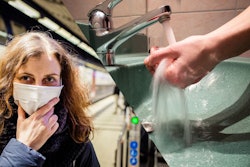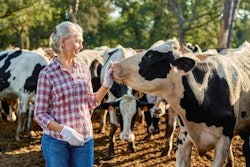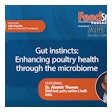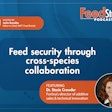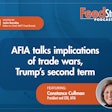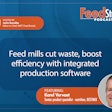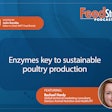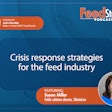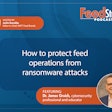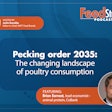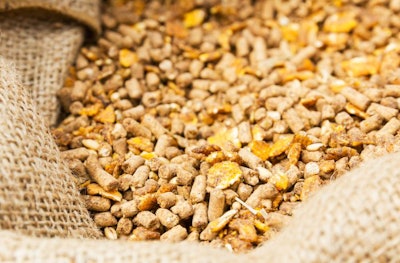
AFIA’s Leah Wilkinson discusses what the Food Safety Modernization Act has meant for the animal feed industry and what to expect in the future.
Podcast: 10 years of FSMA: How it started, how it’s going (09:44)
Ann Reus, Feed Strategy staff reporter: Hello and welcome to the NewsFeed podcast. This is Ann Reus, staff reporter for Feed Strategy.
This month marks 10 years since the Food Safety Modernization Act, or FSMA, was signed into law. I recently spoke with Leah Wilkinson, vice president of public policy and education at the American Feed Industry Association, about what FSMA has meant for the animal feed industry over the years and what to expect in the future.
Looking at where the industry was 10 years ago and where we are now, what have been the biggest changes for animal feed producers?
Leah Wilkinson, vice president of public policy and education at the American Feed Industry Association: So, 10 years ago, or now, if you want to kind of reflect both ways, I’d say our animal feed, feed ingredient, our pet food manufacturers, we’re supplying safe, high-quality, and nutritious feed and pet food for livestock and pets. So, what happened 10 years ago was the Food Safety Modernization Act being signed into law, but our responsibilities, for as long as we’ve been manufacturing commercial feed and pet food, that hasn’t changed. We’ve always had that responsibility to provide safe feed and pet food. But what has changed are some of those regulatory requirements and the language that we use.
So I would say things have been put into FSMA, which is our acronym for the Food Safety Modernization Act, put it into those FSMA terms. We had to talk about an animal food safety plan. Some of our facilities before had food safety items but maybe just didn’t have it all into one central plan. So now we have those quality and food safety programs all put into one plan where we’ve identified hazards, put measures in place to prevent those hazards if they were to occur.
The other big change was, a lot of our facilities were already having safety and quality programs even though there wasn’t a regulatory requirement for Current Good Manufacturing Practices. So now, those regulations brought forward, for the first time, for non-medicated feed and pet food and those ingredients that we need to meet those Current Good Manufacturing Practice regulations. Medicated feed had those before, but the rest of our segments did not. So again, it’s just a little bit of change in the regulation, and the language that we use. But again, all about producing safe and high-quality livestock feed and pet food.
Reus: So, in general, has FSMA been good for the animal feed industry or is it just kind of more of a regulatory burden?
Wilkinson: I think it’s been good. I think it’s helped our facilities, again, compile all of that food safety information into one place, into that food safety plan. It’s provided the conversation within the facility about every employee’s role in providing that food safety to the end product. So, everyone knows their role now for that. Our industry has always had a good story to tell, and because of the regulations, we now have the ability to clearly articulate that to regulators when they come in. Because they come in and they look at your food safety plan and you can walk them through it very clearly by flipping from section to section. So, not only are we telling that story to regulators, but the suppliers that we supply to and our end customers.
Reus: So would you say animal feed in the U.S. is safer now than it was 10 years ago?
Wilkinson: So, while FSMA was signed into law 10 years ago, our animal food industry really has only been in compliance with the regulations for going on four years now. The regulations took some time to be written, and then for the different phase-in across our industry to come into compliance with those regulations. But we are now at the point where all of the animal feed and pet food industries are in compliance with the regulations. So I’d say the feed and pet food industry, we’ve always been learning from past incidences and adopting those new procedures to make safer animal food, and FSMA did help us in that, right? It made food safety the forefront, it made us move from being reactive to being proactive, which was one of the goals of the legislation, and then the regulations that were written for it. So yes, I believe all these efforts have continued to help us lead as producers of manufacturing safe feed and pet food every day.
Reus: How have the smaller feed operations fared in transition to coming into compliance with those regulatory responsibilities that they have now?
Wilkinson: So this was a concern from industry as well as from the regulators, was ensuring that all size facilities could come into compliance. And from the American Feed Industry Association standpoint, we wanted to make sure that the regulations, when they went into place, were something that were easily understood and could be implementable across all sizes of business. And so there was a lot of attention to that when the regulations were being written to make sure that it was fair and could be put into place by all sizes. And we anticipated that there would be some struggles, bringing all of the facilities into compliance and educating on what the requirements were, so we tried to work really hard to make sure that our members had resources available to them, whether it be the literature search that needed to be done as a component of their hazard analysis, providing training videos that they could use to train their employees on hygiene and safety issues, things like that so that it really would reduce some of the burden, the financial burden, on these facilities. So just as with any industry though, when there’s times of change, there does lead to some attrition. We don’t have any documentation of how much that might be, but we do think that all of our facilities are headed in the right direction when it comes to improving the safety practices, because of the regulations and the science that they’ve involved.
Reus: Great. So, what is the status of facility inspections and inspector training during the pandemic?
Wilkinson: So, when the pandemic really came to the forefront in the middle of March, there were physical inspections that were happening by both the state and federal regulators, and that pretty much came to a halt once the shutdown orders that were happening across the states. So, while those haven’t come back fully, there still are inspections that are happening, mostly at the state level. So, FDA has not ramped up at all into its what’s expected to be its normal level of FSMA inspections, but that doesn’t mean that our facilities are not in compliance with the regulation. It’s our responsibility to be in compliance every day whether an inspector is there or not, and to be prepared for those inspections at any time, because that’s our responsibility to be in compliance with the law and the regulations, and that’s what we do.
Reus: What does the future hold for food safety?
Wilkinson: So again, our industry is always learning. We’re learning from past incidences from each other on what we can do to improve the safety of our products. We anticipate with the new administration that there will be a continued focus on food safety, and workplace safety is another area, especially as we emerge from the pandemic. So those inspections will continue, there will be a continued focus on potentially finalizing some of the guidance documents and some of the information that the industry has asked for, to help us better understand what the regulators are looking for when they’re coming out for inspection. So we hope that some of that information will, again, provide more information that we can learn from and continue to improve our compliance with the regulations. We do hope that, if there are any new regulations that come into place, that they’re science and risk based, so that we can continue to do what’s right for producing that safe and high-quality nutritious feed and pet food for our livestock and pets, companion animals.
Reus: OK, thank you, Leah, for taking the time to talk with me today.
Wilkinson: Thank you very much.


